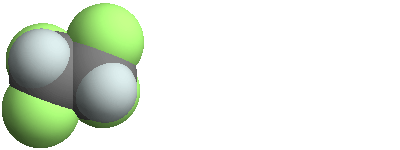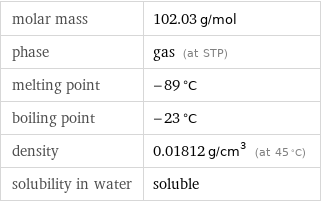Input interpretation

1, 1, 2, 2-tetrafluoroethane
Chemical names and formulas

formula | C_2H_2F_4 name | 1, 1, 2, 2-tetrafluoroethane alternate names | ethane, 1, 1, 2, 2-tetrafluoro- mass fractions | C (carbon) 23.5% | F (fluorine) 74.5% | H (hydrogen) 1.98%
Lewis structure

Draw the Lewis structure of 1, 1, 2, 2-tetrafluoroethane. Start by drawing the overall structure of the molecule: Count the total valence electrons of the carbon (n_C, val = 4), fluorine (n_F, val = 7), and hydrogen (n_H, val = 1) atoms: 2 n_C, val + 4 n_F, val + 2 n_H, val = 38 Calculate the number of electrons needed to completely fill the valence shells for carbon (n_C, full = 8), fluorine (n_F, full = 8), and hydrogen (n_H, full = 2): 2 n_C, full + 4 n_F, full + 2 n_H, full = 52 Subtracting these two numbers shows that 52 - 38 = 14 bonding electrons are needed. Each bond has two electrons, so the above diagram has all the necessary bonds. There are 7 bonds and hence 14 bonding electrons in the diagram. Lastly, fill in the remaining unbonded electrons on each atom. In total, there remain 38 - 14 = 24 electrons left to draw: Answer: | |
3D structure

3D structure
Basic properties

molar mass | 102.03 g/mol phase | gas (at STP) melting point | -89 °C boiling point | -23 °C density | 0.01812 g/cm^3 (at 45 °C) solubility in water | soluble
Units

Gas properties (at STP)

density | 0.01812 g/cm^3 (at 45 °C) molar volume | 5631 cm^3/mol refractive index | 1.2356 dynamic viscosity | 1.2×10^-5 Pa s (at 25 °C)
Units

Thermodynamic properties

molar heat of vaporization | 22 kJ/mol specific heat of vaporization | 0.216 kJ/g critical temperature | 392 K critical pressure | 4.615 MPa (at STP)
Chemical identifiers

CAS number | 359-35-3 Beilstein number | 1733202 PubChem CID number | 9667 SMILES identifier | C(C(F)F)(F)F InChI identifier | InChI=1/C2H2F4/c3-1(4)2(5)6/h1-2H EU number | 206-628-3
Safety properties

flash point | -64 °C

DOT numbers | 3163